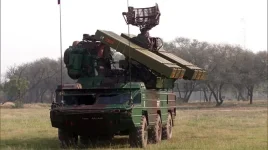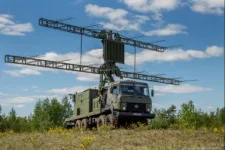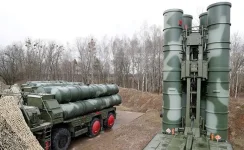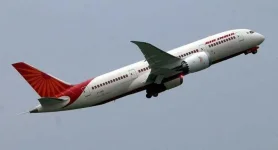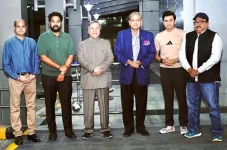- Views: 826
- Replies: 22
Following a significant breakthrough in indigenous scramjet engine technology by the Defence Research and Development Organisation (DRDO), India is set to accelerate the development of its next-generation hypersonic cruise missile, the BrahMos-II.
The advanced missile is reportedly being designed to achieve speeds up to Mach 8 and possess a strike range of 1,500 kilometres.
India and Russia are expected to restart high-level discussions concerning the joint development of the BrahMos-II. This hypersonic cruise missile aims for speeds exceeding Mach 6 and may take cues from Russia's 3M22 Zircon, a scramjet-powered hypersonic missile with nuclear capability.
The BrahMos-II project, first conceptualised by BrahMos Aerospace nearly ten years ago, encountered obstacles previously, including Russia's initial unwillingness to share sophisticated hypersonic technology and concerns from the Indian Armed Forces regarding the missile's substantial per-unit cost.
However, a renewed international emphasis on hypersonic weapons has revived interest, encouraging both nations to investigate collaborative efforts to enhance their strategic defence postures.
The existing BrahMos missile, a result of the Indo-Russian joint venture BrahMos Aerospace formed in 1998, currently holds the title of the world’s fastest supersonic cruise missile. It can attain speeds of up to Mach 3.5 and cover distances from 290 to 800 kilometres, varying by model.
The missile is operational across the Indian Army, Navy, and Air Force and has demonstrated its adaptability through land, sea, air, and submarine-launched versions.
Its precision targeting, low radar visibility, and "fire-and-forget" system have established it as a critical component of India's defence strategy, validated by over 130 successful tests and its use in exercises such as Operation Sindoor in May 2025.
The BrahMos-II, also referred to as BrahMos-2 or BrahMos Mark II, signifies a major advancement in missile technology. Named in tribute to former Indian President and renowned missile scientist Dr. A.P.J. Abdul Kalam, it is projected to reach speeds between Mach 6 and Mach 8 and have a range of up to 1,500 kilometres.
The missile is intended to utilise scramjet engine technology, which allows for sustained flight at hypersonic speeds.
The design may draw upon Russia's 3M22 Zircon, a hypersonic cruise missile reportedly capable of Mach 9 speeds and a 1,000 km range, which has been successfully inducted by the Russian Navy, presenting it as a formidable reference for the BrahMos-II.
Hypersonic missiles are of increasing strategic importance globally due to their high speed, which significantly reduces interception time and challenges existing missile defence systems.
The BrahMos-II initiative was initially made public in 2008, with the first tests anticipated by 2015. However, the project experienced considerable delays due to several issues.
Russia, as a member of the Missile Technology Control Regime (MTCR) – an informal agreement among nations to prevent the spread of missile technology capable of carrying large payloads over long distances – was at first restricted from sharing technology for missiles with ranges beyond 300 km. This restriction was alleviated when India became a member of the MTCR in 2014.
Furthermore, Russia's reluctance to transfer crucial scramjet engine technology, integral to the Zircon missile, created a significant impediment.
The high developmental and production costs, potentially double that of the current BrahMos, also tempered enthusiasm, leading the Indian Armed Forces to voice concerns about the economic viability of acquiring it in large numbers.
By mid-2024, information suggested that the BrahMos-II program, sometimes known as BrahMos-2K, had been temporarily put on hold owing to these technical and financial difficulties.
The Indian Armed Forces had shifted focus towards upgrading the existing BrahMos missile, aiming to improve its ramjet engine to achieve near-hypersonic speeds of Mach 5, considered a more financially practical option than developing a completely new hypersonic system.
Nevertheless, the global pursuit of hypersonic weapons by countries including Russia, China, and the United States has led to a strategic re-evaluation of the BrahMos-II project.
The BrahMos-II is anticipated to feature a scramjet (supersonic combustion ramjet) engine, a notable improvement over the ramjet propulsion system used in the current BrahMos.
Unlike ramjets, which must slow down incoming air to subsonic speeds for combustion, scramjets operate efficiently at hypersonic speeds (above Mach 5) by using atmospheric oxygen for combustion at supersonic speeds. This design reduces the missile's need to carry its own oxidizer, enabling longer ranges and higher velocities.
The missile is expected to weigh around 1.33 tonnes, approximately half the weight of the air-launched BrahMos-A (2.65 tonnes), potentially allowing its integration with a wider array of aircraft, including India's indigenous Light Combat Aircraft (LCA) Tejas.
A critical development in India's hypersonic ambitions occurred on April 25, 2025, when the DRDO successfully tested a scramjet engine combustor for over 1,000 seconds. This achievement is a major step forward.
Dr. Sudhir Kumar Mishra, former Director General of DRDO, highlighted that this domestically developed technology could be incorporated into the BrahMos-II.
Such integration would lessen dependence on Russian systems and support India's "Make in India" initiative, which encourages domestic manufacturing and technological self-reliance.
While the BrahMos-II may be inspired by the Zircon, DRDO's advancements indicate a potential hybrid approach, combining indigenous innovation with selected technology cooperation.

